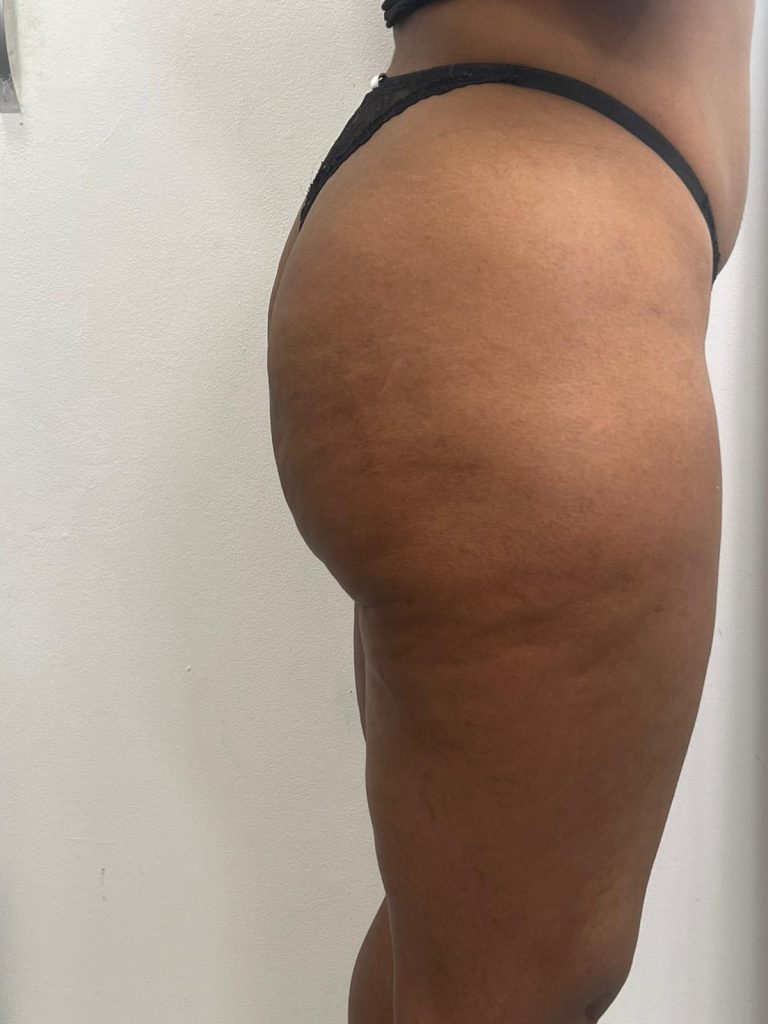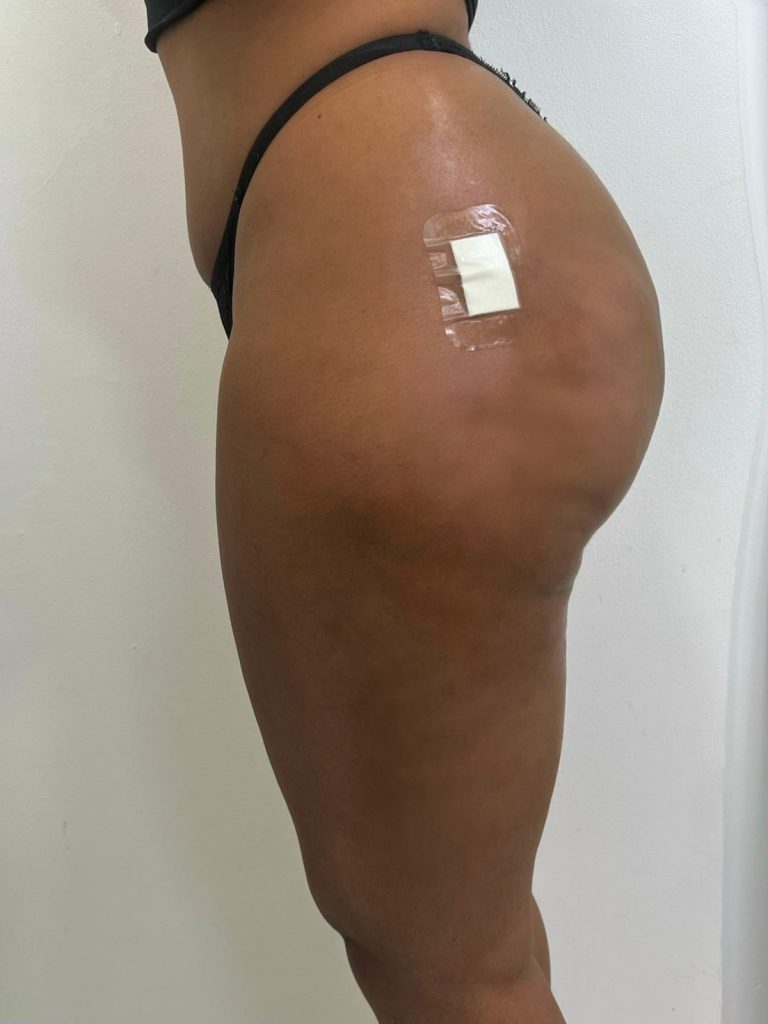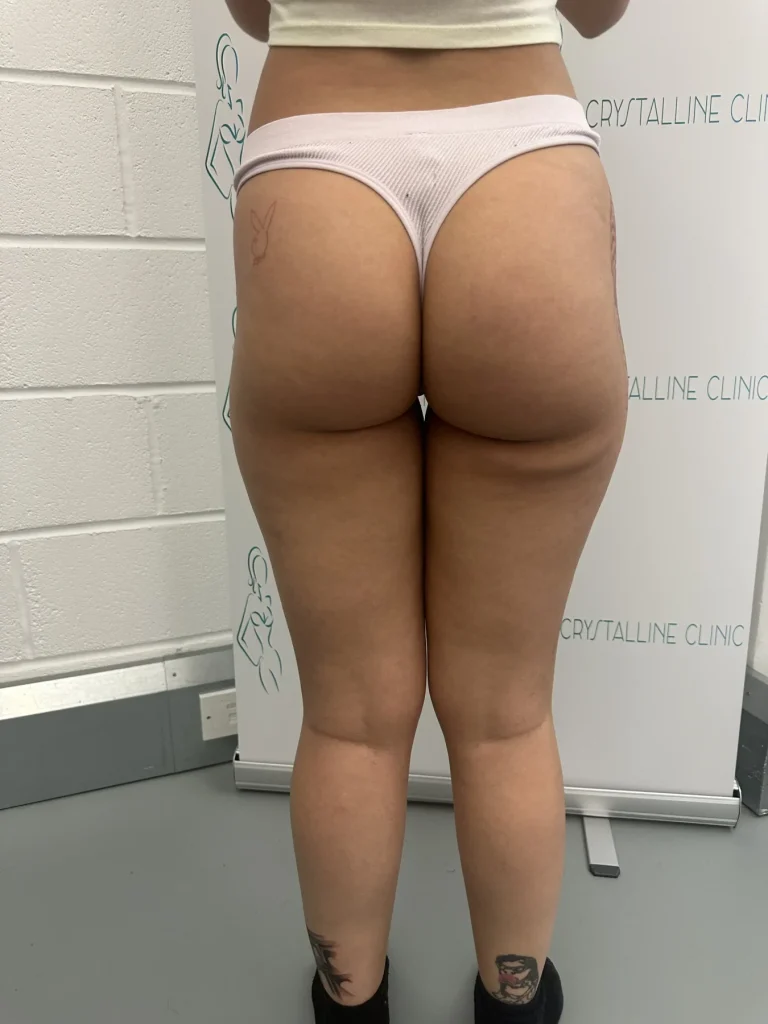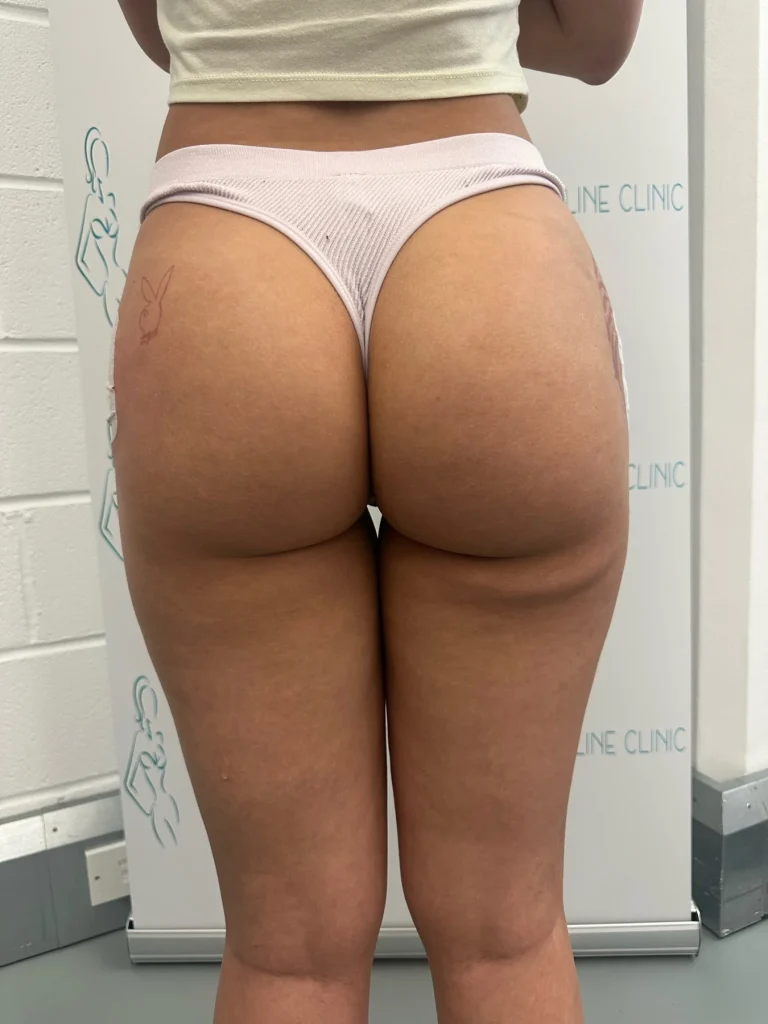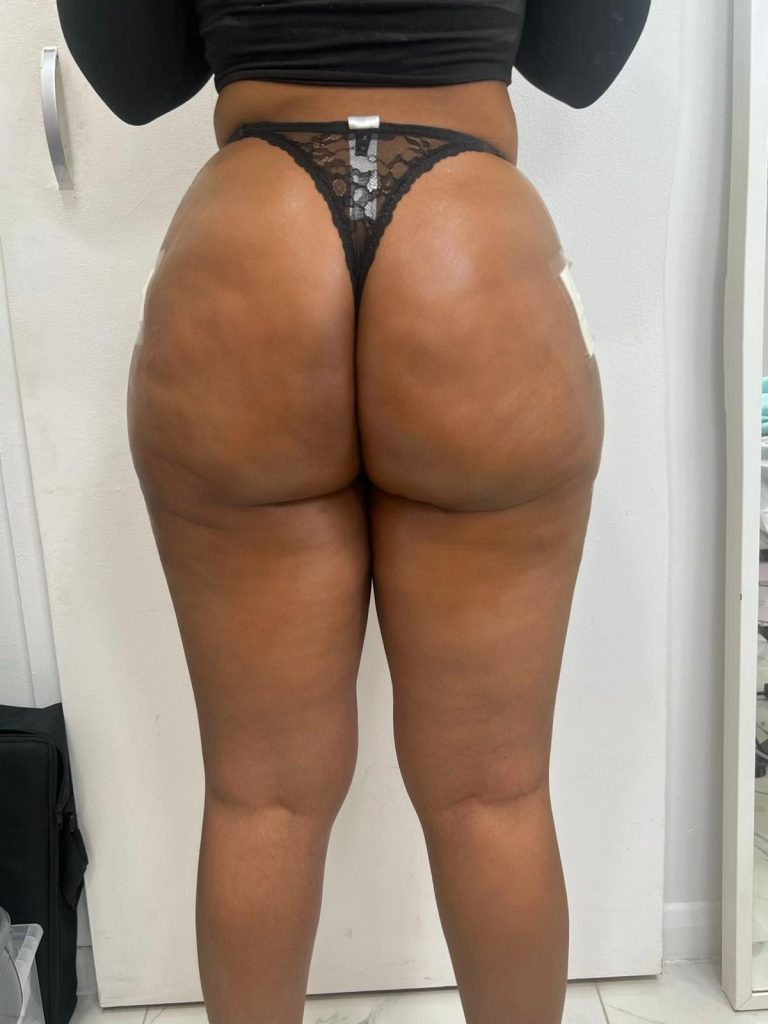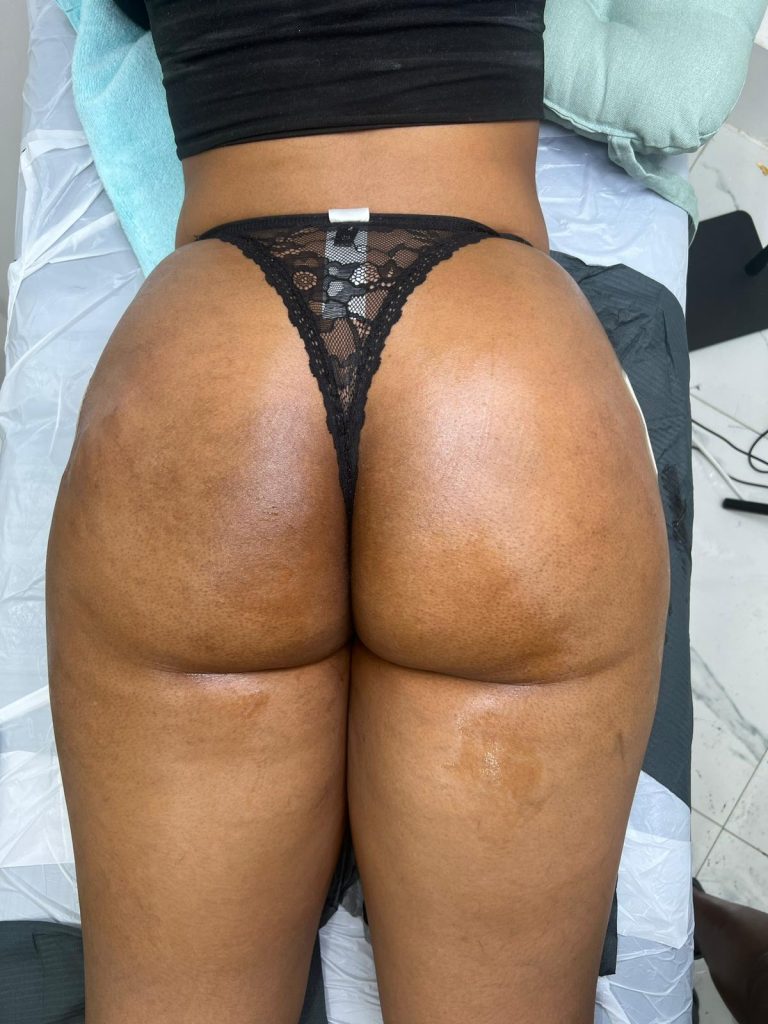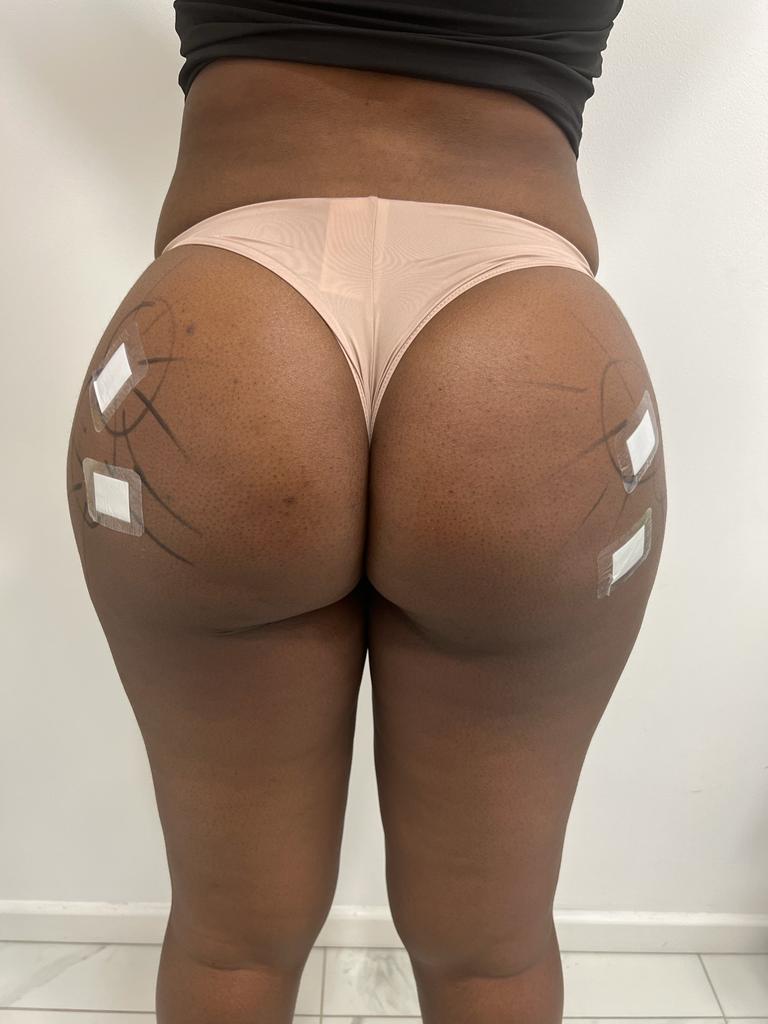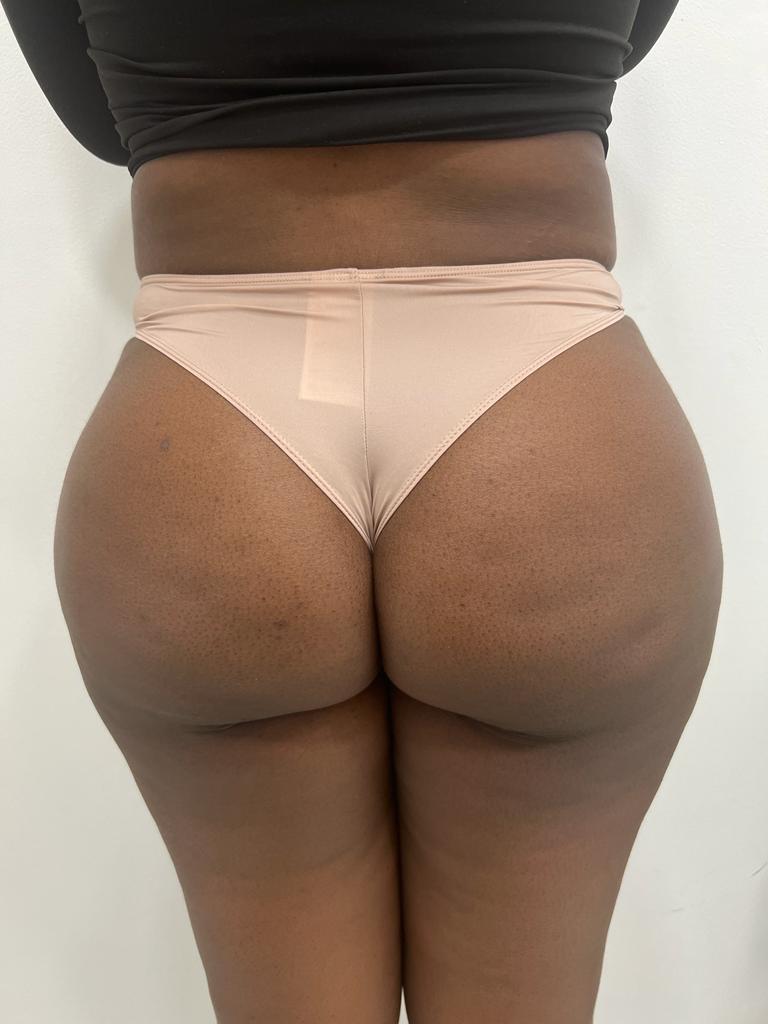The popularity of non-surgical cosmetic procedures is on the rise as an alternative to extremely invasive surgeries. Among these new and innovative approaches is the Liquid BBL, which promises the same results as traditional surgery but without the risks associated with them.
But are Liquid BBLs safe? That’s the question we will answer in this blog.
What is a Liquid BBL?
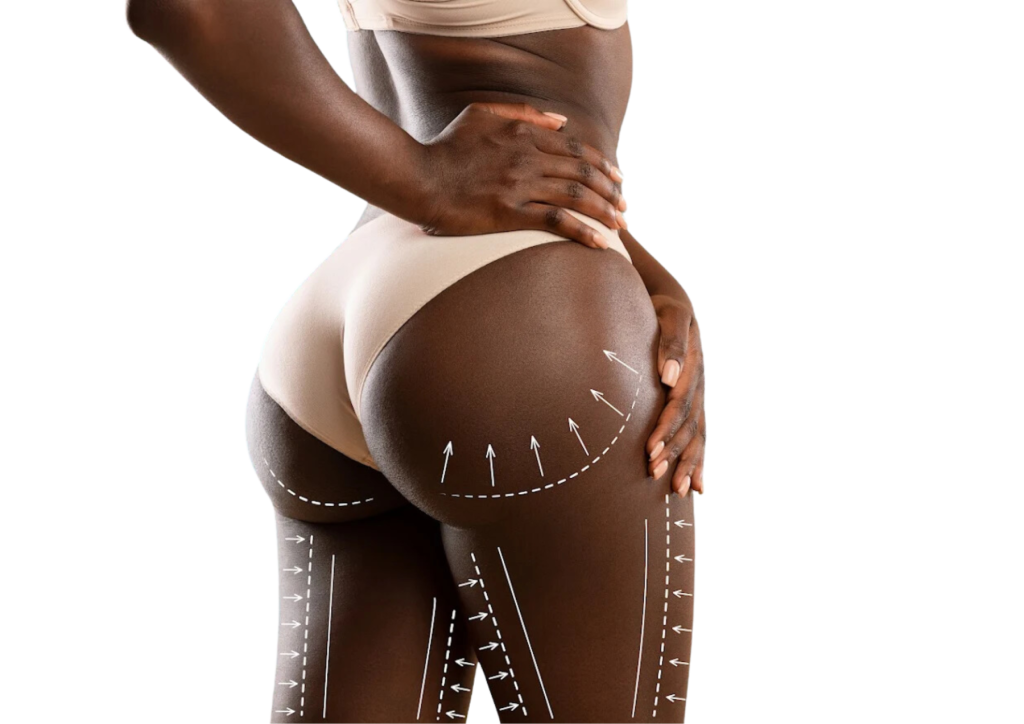
A non-surgical butt lift, also known as a Liquid BBL, is, as the name would suggest, a butt lift done without surgery. Unlike the typical extremely invasive procedure involving liposuction and fat transfer, a liquid BBL uses Injectable Hyaluronic acid dermal filler to shape and sculpt the buttocks, achieving the same results as surgery but with added safety.
Safety Concerns:
When done by licensed and trained medical practitioners, dermal fillers are widely considered to be a safe procedure. However, as with all medical procedures, there are potential risks and side effects. Some of these include:
- Infection – As with all injections, there is a risk of infection when getting dermal filler. An infection may then lead to more complications.
- Allergic Reaction – Some people may be allergic to any of the materials used in dermal fillers, causing an allergic reaction.
- Hematomas – Hematomas or collections of blood outside of their vessels may develop at the injection site if blood vessels are inadvertently punctured or if there is excessive bleeding.
- Nerve Damage – If the filler is injected too deeply or in the wrong location, nerve damage may occur. But, with Liquid BBLs the injection is done within the outer layer of the skin (the epidermis) after local numbing. A cannula is also used to place the filler, minimizing the risk of nerve damage.
Safety Advantages
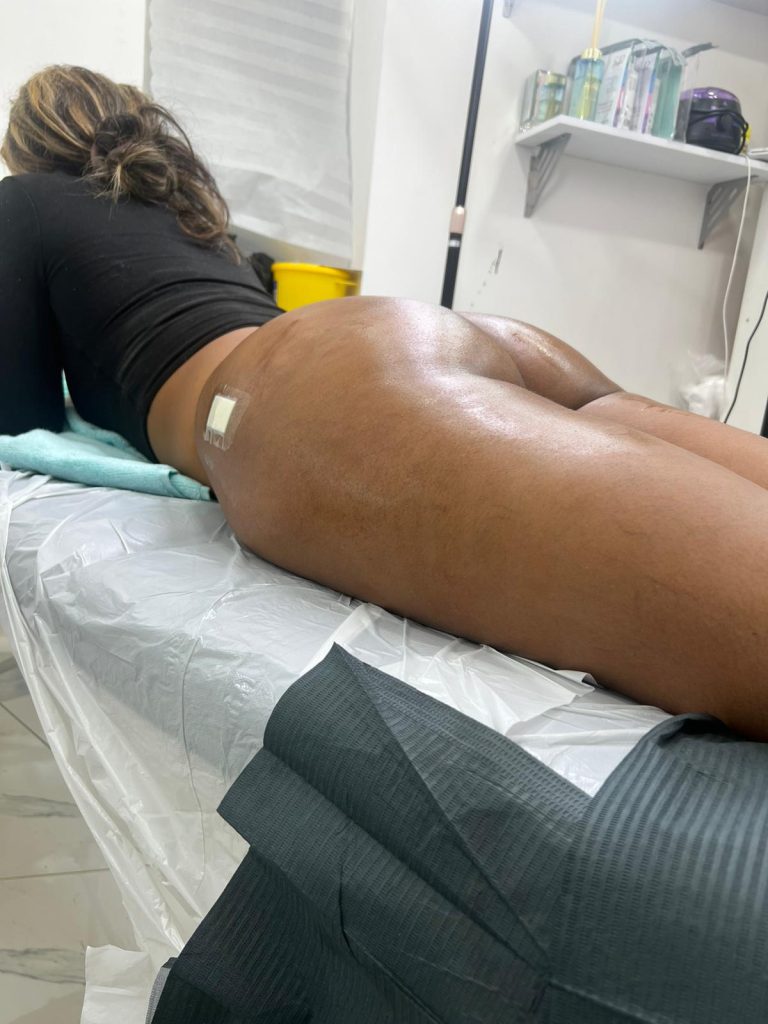
Because liquid BBLs are minimally invasive compared to their surgical counterpart, there are also more safety advantages. The non-surgical nature of liquid BBLs mitigates any risk involved with anesthesia and incisions. Furthermore, Injectable Hyaluronic Acid dermal filler offers greater precision and control, reducing the risk of any asymmetry and overcorrection. Another risk often associated with BBLs is fat embolism. However, as no fat transfer is involved in Liquid BBLs, the risk of a fat embolism is effectively eliminated.
Regulatory Oversight and Standards:
To further mitigate risks associated with Liquid BBLs, patients must select a reputable medical facility and seek treatment from an insured, registered and licensed medical professional, such as a trained nurse or doctor. Choosing a facility that adheres to stringent safety standards and regulatory oversight can significantly enhance the safety and quality of the procedure.
Patient Education and Informed Consent:
Patient education and informed consent are vital to ensuring the safety and success of a Liquid BBL procedure. Patients must educate themselves on potential risks, benefits, and expected outcomes before undergoing the procedure. This knowledge will allow patients to make more informed decisions about their health.
Conclusion – Are liquid BBLs safe?
In conclusion, while Liquid BBLs offer a great non-surgical alternative to traditional BBLs, ensuring a safe procedure requires thorough patient education on potential risks, adherence to regulatory standards, and understanding what to expect during and after the procedure. With proper guidance from licensed professionals, patients can rest easy knowing their health and well-being are the number one priority.
At Crystalline Clinic, patient health and well-being are our top priorities. So much so that we have a 0% infection rate. We are staffed with licensed medical practitioners of the highest pedigree who adhere to all regulatory guidelines and the highest level of safety standards. With our commitment to patient safety and quality of services, you can trust Crystalline Clinic with all your aesthetic needs.
Ready to enhance your birthright beauty? Book your consultation today and take the first step towards your aesthetic goals.

